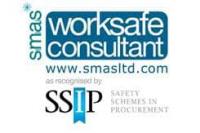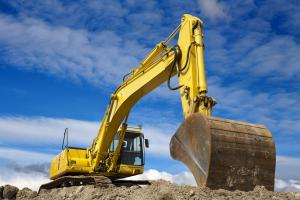SMAS Accreditation
 We are extremely pleased to announce that we have recently gained our SMAS (Safety Management Assessment Specialists) accreditation and so have received another SSIP (Safety Schemes in Procurement) member certificate.
We are extremely pleased to announce that we have recently gained our SMAS (Safety Management Assessment Specialists) accreditation and so have received another SSIP (Safety Schemes in Procurement) member certificate.
With more and more clients requesting consultants are SMAS accredited, our Worksafe certificate means the appointment/procurement process can be fast-tracked as our quality standards have been independently verified.
SMAS accreditation enables a consultancy to demonstrate full Health & Safety competence following inspection and assessment of policy, procedures, training, records and insurances.
As a fully accredited consultancy, Wilkins Safety Group are now listed on the SSIP database as:
- Health & Safety Consultant. – SMAS accredited
Assessed Against:
CDMC Services, Health and Safety Consultants
- Principal Designer – APS accredited
- CDM Adviser – APS accredited
Assessed Against:
Principal Designer and CDM Adviser (Client Adviser and Principal Designer Adviser Service)
This week’s 2 recent HSE case look at recent cases where there were life changing injuries
- The worker’s hand came into contact with shears and three fingers on his right hand were severed, below the first knuckle
- A Welsh waste business has been fined £180,000 after a worker had to have both legs amputated when he was run over by a shovel loader at a landfill site in Powys
As ever, if you have a subject that you would like us to cover one week, please contact us by phone 01458 253682, email or via our Facebook page or by Twitter.
Providing and using work equipment safely
As this week’s two most recent HSE Cases are both related to work equipment, I thought it might be prudent to remind everyone about their duties under the Provision and Use of Work Equipment Regulations 1998 (PUWER)
This article explains what you, as an employer, may need to do to eliminate or reduce the risks from work equipment. It will also be useful to employees and their representatives.
It covers all workplaces and situations where the Health and Safety at Work etc. Act 1974 applies, including offshore installations. If you are an employer, a manager, a supervisor or hire out equipment for use in the workplace, this leaflet will help you understand what you can do to reduce the chances of an accident happening.
For some operations you will need more detailed information. If you wish to build, modify or add equipment (for example to a production line) you will probably need to seek advice from a competent engineer or equivalent person who is aware of the relevant European standards and requirements.
If you would like information on the law, or on other publications which give you more guidance on selection, protection measures and the safe use of particular types of machinery or other work equipment, see ‘Further information’.
What is work equipment?

‘Work equipment’ is almost any equipment used by a worker while at work including:
- machines such as circular saws, drilling machines, photocopiers, mowing machines, tractors, dumper trucks and power presses;
- hand tools such as screwdrivers, knives, hand saws and meat cleavers;
- lifting equipment such as lift trucks, elevating work platforms, vehicle hoists,
- lifting slings and bath lifts;
- other equipment such as ladders and water pressure cleaners.
Who is responsible for work equipment?
Employers and those who have control over work equipment (e.g. those hiring out work equipment) have responsibilities for equipment provided for use at work.
What do I need to do?
Look at all the equipment in use, decide what can cause risks, and how. Consider what can be done to prevent or reduce these risks by asking yourself:
- Do the current safeguards prevent injury?
- Is it practicable to fit further safeguarding measures if they do not?
- Is it practicable to modify or change the method of operation to make it safer?
The following information may help you decide what to do.
What risks are there from using work equipment?
Many things can cause a risk, for example:
- using the wrong equipment for the job, e.g. ladders instead of access towers for an extended job at high level;
- not fitting adequate guards on machines, leading to accidents caused by entanglement, shearing, crushing, trapping or cutting;
- not fitting adequate controls, or the wrong type of controls, so that equipment cannot be turned off quickly and safely, or starts accidentally;
- not properly maintaining guards, safety devices, controls etc. so that machines or equipment become unsafe;
- not providing the right information, instruction and training for those using the equipment;
- not fitting roll-over protective structures (ROPS) and using seat belts on mobile work equipment where there is a risk of roll over (Note: this does not apply to quad bikes);
- not maintaining work equipment or carrying out regular inspections and thorough examinations;
- not providing the personal protective equipment needed to use certain machines safely, e.g. chainsaws, angle grinders.
Identifying the risks
When identifying the risks, think about:
- all the work which has to be done with the equipment during normal use and also during setting-up, maintenance, repair, breakdowns and removal of blockages;
- who will use the equipment, including inexperienced workers, workers with language difficulties, new starters, people who have changed jobs within the company or those who may have particular difficulties, e.g. those with impaired mobility or poor readers;
- young people, who may be inexperienced and lack knowledge or awareness of existing or potential risks;
- workers who may act foolishly or carelessly or are likely to make mistakes;
- whether guards or safety devices are poorly designed and inconvenient to use or are easily defeated (this could encourage workers to risk injury);
- the type of power supply, eg electrical, hydraulic or pneumatic – each type has different risks and ways to control them.
What can I do to reduce the risks?
- Use the right equipment for the job
Many accidents happen because people have not chosen the right equipment for the work to be done. Controlling the risk often means planning ahead and ensuring that suitable equipment or machinery is available.
- Make sure machinery is safe
You should check the machinery is suitable for the work – think about how and where it will be used. All new machinery should be:
- safe, that means provided complete with all necessary guards and protective devices; CE marked (CE marking is not a guarantee that the machinery is safe, only the manufacturer’s claim that the product meets all relevant supply Directive requirements);
- provided with an EC Declaration of Conformity (ask for a copy if you have not been given one);
- provided with instructions in English. These should state how to assemble, install, use, adjust and maintain the machinery, including dealing with blockages. The instructions should also give details on the protective measures to take, such as when personal protective equipment should be provided and used; warn of ways in which machinery must not be used; and of any remaining residual risks that need to be controlled by safe systems of work.
If you think that machinery you have bought is not safe DO NOT USE IT. Contact the manufacturer or supplier to discuss your concerns and if they are not helpful, contact HSE for advice.
Remember, it is your responsibility as an employer or a subcontractor to ensure you do not expose others to risk.
If you need further information please call us on 01458 253682 or send us an email.
Training Courses
We shall be running new courses again in 2017 and the dates and details of forthcoming courses will be published here each week.
But remember we are still available for running “In House” courses and are looking to add new training courses to our list.
If you have any questions about these courses or any other training or would like us to run a particular course for you, call Jon Wilkins of the Wilkins Safety Group on 01458 253682 or email him.
